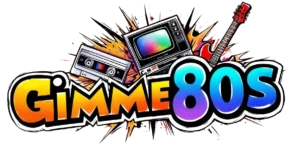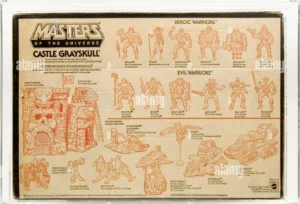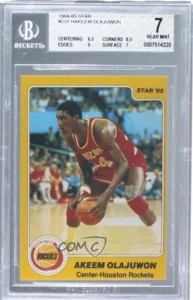1983 Nintendo Famicom (Japanese NES)

Running this archive is expensive! To help pay these bills, I use the eBay Partner Network, so if you click on an eBay link and buy, I earn a small commission at no cost to you.
VALUE / PRICE HISTORY
No price data available for this item yet.
Sorry, we don't yet have data for this item. If you think this is incorrect or want to help, Contact Us or post in our forum.
ITEM REVIEW
The Famicom, which is also known as the Japanese NES, was an 8-bit home video game console that was manufactured by the well-known company Nintendo and subsequently released to the public in the year 1983.

Background
Nintendo’s entry into the home console market came into existence as a result of their successful history in the arcade game industry, with the Famicom representing a strategic pivot towards the realm of home entertainment. The development of this console commenced in 1982, under the leadership of engineer Masayuki Uemura, who initially envisioned a more complex 16-bit system that would incorporate features reminiscent of computers. However, Nintendo’s president, Hiroshi Yamauchi, expressed a preference for a simpler and more affordable gaming platform that would, in turn, appeal to a much broader audience of potential users.
The initial design process encountered significant technical challenges, particularly due to the fact that 65xx CPUs were not widely manufactured in Japan at that particular point in time. Early game development necessitated the use of custom-built programming tools, with graphics being designed through the use of LEDs arranged on a grid and a digitizer; these technologies may seem primitive by the standards of today, yet they represented cutting-edge innovation during the early 1980s.
Features



The technical specifications of the Famicom included a custom 8-bit processor, which allowed for the creation of more sophisticated game design compared to previous consoles that had been released before it. Its cartridge-based system supported games that featured increasingly complex graphics and gameplay mechanics that could captivate players. The console was equipped with two hardwired controllers; this particular design choice notably differed from many contemporary systems of that time, with the second controller including a microphone that enabled unique interactive possibilities for players.
Key technical specifications included:
– An 8-bit MOS 6502 processor
– 2 KB of onboard RAM memory
– A color palette that supported a total of 54 colors
– A screen resolution of 256×240 pixels
– A unique 10NES lockout chip that was designed to prevent unauthorized game cartridges from being played on the system
Popularity and Legacy
When the Famicom was launched in Japan, it quickly set itself apart from competing consoles such as the Colecovision. Its library of games expanded at a rapid pace, featuring titles that would eventually become legendary franchises, including Super Mario Bros, The Legend of Zelda, and Metroid. The durability of the console was particularly notable, as many units managed to survive repeated drops and interactions that were often fueled by frustrated players.
The success of the system was not immediate, but within just a few short years, it had successfully transformed the landscape of video gaming. Third-party developers were restricted to releasing only five titles per year, and every single game required Nintendo’s thorough review and approval; this strategy maintained a level of quality but also granted Nintendo a significant amount of control over the market.

Video Reviews and Commercials
The review covers the Nintendo Famicom, the Japanese predecessor to the NES. The host criticizes its unattractive design, comparing it to a poorly assembled Lego creation. After some initial technical difficulties with plugging in the console, he successfully powers it on, noting its built-in controllers and large eject button.
Availability and Collectability
By the mid-1980s, the Famicom had undergone a rebranding and was introduced to international markets as the Nintendo Entertainment System (NES). Collectors in the present day highly prize original Japanese models, with complete systems that are in good condition fetching significant prices among enthusiasts of retro gaming. The cultural impact of the console extends far beyond the realm of gaming, representing a pivotal moment in the evolution of consumer electronics and interactive entertainment.
Collectors often seek out specific variants, including:
– The original red and white color model
– Later revised models that had some modifications
– Special edition consoles that were released
– Complete systems that come with the original packaging
The influence of the Famicom continues to resonate decades after its initial release, having established gameplay mechanics, design philosophies, and franchises that persistently shape the development of modern video games.
Like it? Then you might also like...
DISCUSSION
Information here is to the best of my knowledge at the time of writing, and is frequently updated and improved as I learn more. Contact Me for Feedback or Corrections. Gimme80s.com is not responsible for inaccurate information or commentary, media, or links posted by 3rd parties.














































